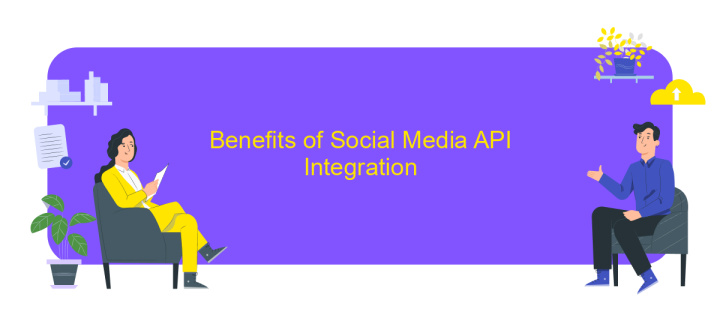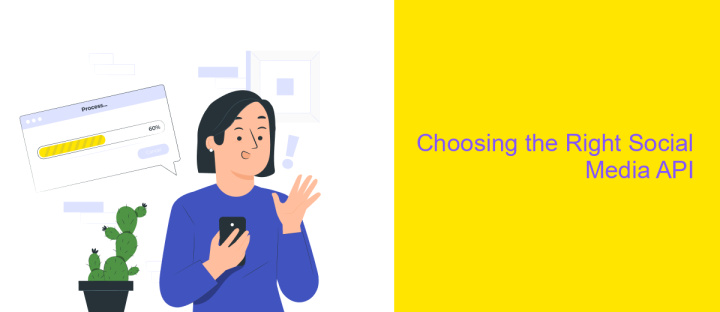Social Media Integration API
In today's digital landscape, social media integration has become essential for businesses looking to enhance their online presence and engage with audiences more effectively. A Social Media Integration API offers a seamless way to connect various social media platforms with your applications, enabling automated content sharing, user engagement tracking, and real-time analytics. This article explores the benefits and functionalities of leveraging such APIs to streamline your digital strategy.
Introduction to Social Media Integration APIs
Social media integration APIs have become a pivotal tool for businesses and developers seeking to enhance their digital presence. These APIs allow applications to seamlessly connect with various social media platforms, providing a more interactive and engaging user experience. By leveraging these tools, businesses can streamline their operations, gather insights, and improve customer engagement. The integration of social media APIs can significantly enhance the functionality of websites and applications, making them more dynamic and user-friendly.
- Enable seamless sharing of content across social platforms.
- Facilitate user authentication via social media accounts.
- Provide access to social media analytics and insights.
- Allow real-time interaction and engagement with users.
- Integrate social media feeds directly into applications.
Implementing social media integration APIs is not only beneficial for enhancing user experience but also for gaining a competitive edge in the digital marketplace. By offering features such as content sharing, user authentication, and access to valuable analytics, these APIs empower businesses to connect with their audience more effectively. As social media continues to evolve, the importance of integrating these APIs into digital strategies will only grow, making them an essential component of modern web and application development.
Key Features and Functionality

The Social Media Integration API offers a robust set of features designed to streamline the connection between various social media platforms and your applications. One of the key functionalities is its ability to facilitate seamless data exchange, allowing users to post, retrieve, and manage content across multiple social media channels effortlessly. This API supports real-time updates, ensuring that any changes made are instantly reflected across all connected platforms, enhancing user engagement and content consistency.
Additionally, the API provides comprehensive analytics tools, enabling users to track performance metrics and gain insights into audience interactions. For those seeking an efficient way to configure integrations, services like ApiX-Drive offer a user-friendly interface to set up and manage these connections without the need for extensive coding knowledge. ApiX-Drive simplifies the integration process, allowing businesses to focus on leveraging their social media presence effectively. With its scalable architecture, the Social Media Integration API can accommodate growing data demands, making it an essential tool for businesses aiming to enhance their digital strategy.
Benefits of Social Media API Integration

Integrating social media APIs into your application can significantly enhance user engagement and streamline operations. By leveraging these APIs, businesses can offer seamless social media experiences directly within their platforms, fostering a more interactive and connected environment. This integration not only enriches user interactions but also provides valuable insights into user behavior and preferences, aiding in more targeted marketing strategies.
- Enhanced User Engagement: Social media APIs allow users to interact with content without leaving your platform, increasing time spent and engagement.
- Real-time Data Access: Businesses can access up-to-date information and analytics, helping them make informed decisions quickly.
- Streamlined Content Sharing: Users can effortlessly share content across multiple social media platforms, broadening your reach and visibility.
- Improved Customer Support: Integrating APIs can facilitate direct communication channels, improving responsiveness and customer satisfaction.
- Cost-effective Marketing: Access to social media data allows for more precise targeting, optimizing marketing efforts and reducing costs.
Overall, integrating social media APIs is a strategic move for any business aiming to stay competitive in the digital landscape. It offers a myriad of benefits, from boosting user engagement to providing valuable data insights, ultimately contributing to a more robust and effective digital strategy.
Choosing the Right Social Media API

When selecting a social media API, it's crucial to consider your specific needs and objectives. Different APIs offer various functionalities, and understanding these can help streamline your integration process. Start by identifying the platforms that are most relevant to your target audience and business goals.
Next, evaluate the features and capabilities of each API. Some APIs provide extensive analytics, while others focus on content publishing or user engagement. It's important to ensure that the API you choose aligns with your technical requirements and offers the necessary support and documentation.
- Compatibility with existing systems
- Scalability for future growth
- Security and data privacy standards
- Cost and licensing terms
- Community and developer support
After narrowing down your options, test the APIs in a controlled environment to assess their performance and reliability. This hands-on approach will give you insights into potential challenges and help you make an informed decision. Remember, the right API should not only meet your current needs but also adapt to future developments and trends in social media.
Implementation and Best Practices
Implementing a Social Media Integration API requires a strategic approach to seamlessly connect various platforms. Begin by identifying the specific social media channels your business needs to integrate. Evaluate the API documentation provided by these platforms to understand their capabilities and limitations. It’s crucial to ensure that your integration supports real-time data synchronization and secure data handling. Utilize OAuth for authentication to maintain user privacy and data security. Testing is essential; use sandbox environments to validate API functions before going live.
Adopting best practices can significantly enhance your integration process. Consider using a service like ApiX-Drive, which simplifies the integration by providing a user-friendly interface and automated workflows. This can save time and reduce errors associated with manual coding. Regularly monitor API performance and update as platforms evolve to maintain compatibility. Additionally, implement robust error-handling mechanisms to manage potential API failures gracefully. Prioritize scalability to accommodate future growth and ensure that your integration remains efficient and effective over time.
FAQ
What is a Social Media Integration API?
How can I use a Social Media Integration API in my application?
What are the benefits of using a Social Media Integration API?
Are there any tools to simplify the integration of social media APIs?
What are some common challenges when integrating social media APIs?
Apix-Drive is a simple and efficient system connector that will help you automate routine tasks and optimize business processes. You can save time and money, direct these resources to more important purposes. Test ApiX-Drive and make sure that this tool will relieve your employees and after 5 minutes of settings your business will start working faster.

